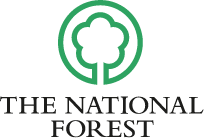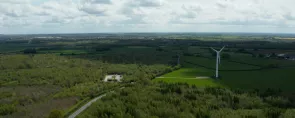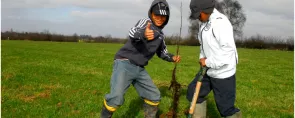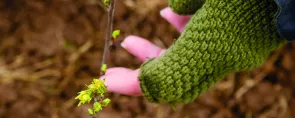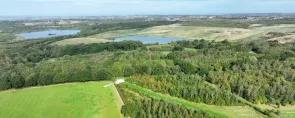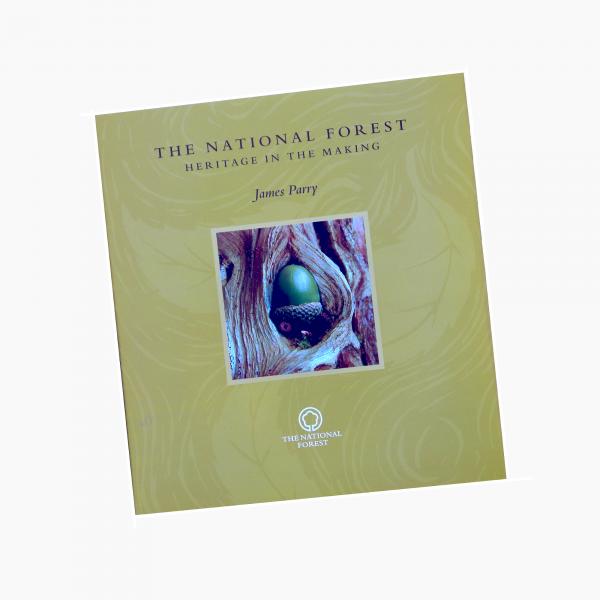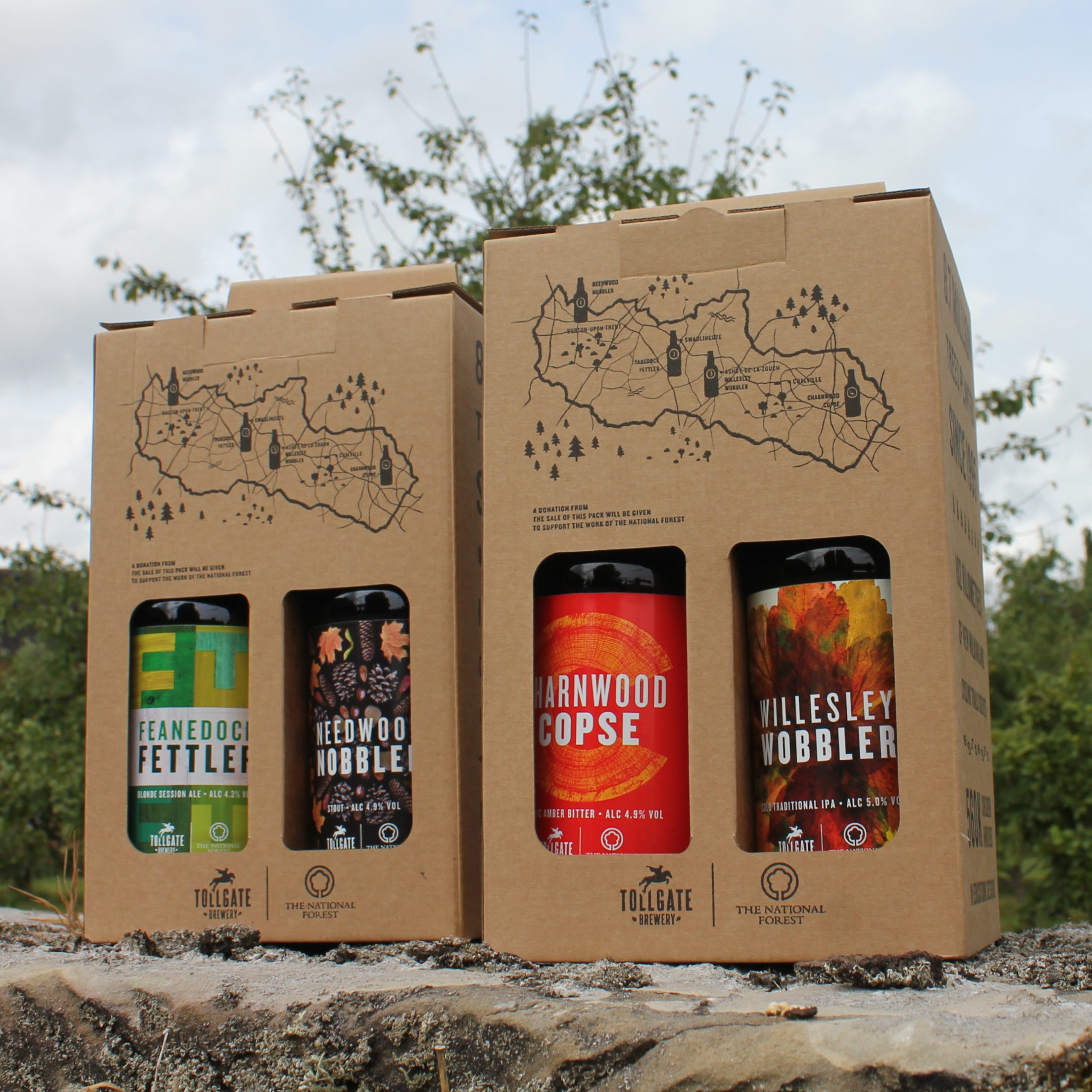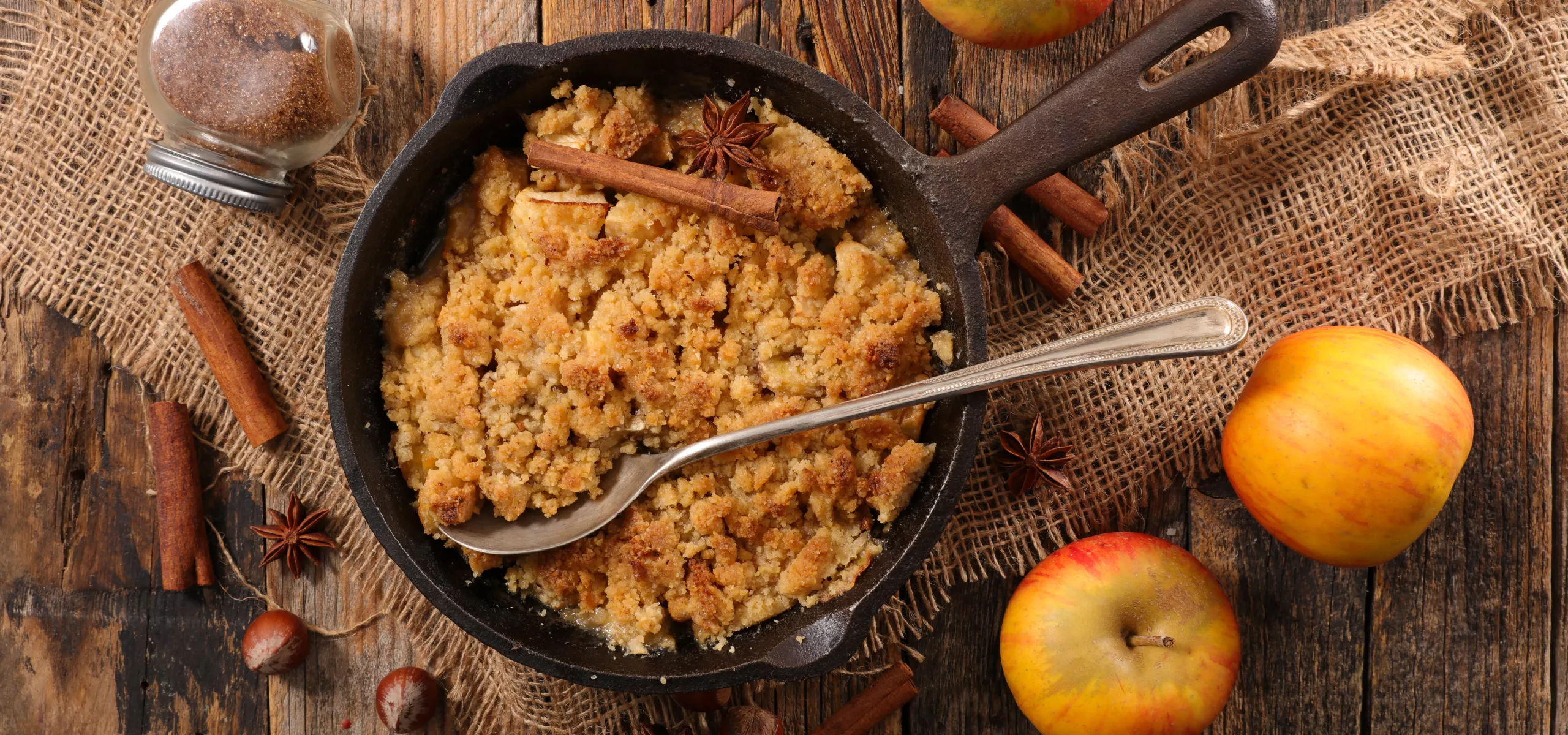Elderflowers: Found from late May to early July, elderflowers grow in clusters on elder trees. These creamy-white blossoms are used to make refreshing cordials and can be transformed into delicious desserts.
Elderberries: Look for these where you found the elderflowers, from late summer to early autumn. These tiny black berries taste amazing in jams, wines and jellies.
Blackberries: Ripening from late July through October, blackberries are abundant in hedgerows and woodland edges. They are perfect for making jams, pies, and scones.
Wild Apples: Various types of wild apples can be found from late summer to early autumn. They are often smaller and sourer than cultivated varieties but are excellent for making ciders, sauces, and desserts.
Nettles: Available from early spring to late autumn, young nettle leaves can be used in soups, teas, and as a spinach substitute in various dishes.
Wild Garlic: Found in damp woodlands from late winter to early summer, wild garlic has broad leaves and a distinct garlicky aroma. It can be used in pesto, soups, and salads.
Hawthorn Berries: These bright red berries appear in the autumn and can be used to make jellies, syrups, and wines.
Dog Rose Petals: Blooming in late spring and early summer, these delicate pink petals can be used to make aromatic syrups and jellies.
Foraging should always be done with care and respect for nature.
Always ensure you are foraging on public land or have explicit permission to be on private property to avoid trespassing and only take what you need, leaving enough for wildlife and future growth. Don’t forage in areas that are designated as SSSI or Nature Reserves.
Here are some key guidelines:
Know Your Plants: Educate yourself on what is safe to eat. Some plants can be easily mistaken for inedible or toxic ones, especially funghi. Use a reputable guidebook or app, and when in doubt, do not consume the plant. You might also chose to go foraging with a trained guide or expert, or as part of an organised event.
Sustainable Harvesting: Only take what you need, and never strip a plant of all its resources. This ensures that plants can continue to grow and reproduce.
Leave No Trace: Respect the environment by not disturbing wildlife and leaving the area as you found it. Avoid using plastic bags; instead, use a basket or cloth bag.
Here are some of our favourite recipes using foraged ingredients:
Wild Apple Crumble
Ingredients:
- 500g wild apples, peeled, cored, and sliced
- 100g sugar
- 1 tsp cinnamon
- 150g plain flour
- 100g butter
- 75g brown sugar
Instructions:
- Preheat oven to 190°C (170°C fan/gas mark 5).
- Place apples in a baking dish, sprinkle with sugar and cinnamon.
- In a bowl, rub the butter into the flour to make a breadcrumb texture.
- Stir in the brown sugar and sprinkle the crumble mixture over the apples.
- Bake for 30-35 minutes until the topping is golden and the apples are tender.
- Serve with custard or cream.
Elderflower Cordial
Ingredients:
- 20 elderflower heads
- 1.5 litres of water
- 1 kg sugar
- 2 lemons, sliced
- 50g citric acid
Instructions:
- Shake the elderflower heads to remove insects.
- Boil the water and dissolve the sugar in it. Allow to cool.
- Place elderflowers, lemon slices, and citric acid in a large container.
- Pour the sugar water over the elderflowers.
- Cover and leave to infuse for 24-48 hours.
- Strain through a muslin cloth into sterilized bottles. Store in the fridge and dilute with water to serve.
Blackberry Scones
Ingredients:
- 250g self-raising flour
- 50g butter, cubed
- 25g sugar
- 150ml milk
- 100g blackberries
Instructions:
- Preheat oven to 220°C (200°C fan/gas mark 7).
- Rub the butter into the flour until it resembles breadcrumbs.
- Stir in the sugar and milk to form a dough.
- Gently fold in the blackberries.
- Turn the dough onto a floured surface and pat into a round about 2.5cm thick.
- Cut into rounds with a cutter and place on a baking tray.
- Bake for 12-15 minutes until risen and golden.
- Serve with clotted cream and jam.
Rose Petal Syrup
Ingredients:
- 2 cups fresh dog rose petals
- 2 cups water
- 2 cups sugar
- Juice of 1 lemon
Instructions:
- Rinse the rose petals thoroughly and place them in a saucepan with the water.
- Bring to a boil, then reduce heat and simmer for 10 minutes.
- Remove from heat and let the petals steep for a few hours or overnight.
- Strain the liquid into another saucepan, discarding the petals.
- Add the sugar and lemon juice to the liquid and bring to a boil.
- Reduce heat and simmer until the syrup thickens (about 10-15 minutes).
- Pour into sterilised bottles and store in the fridge. Use to flavour drinks, desserts, and more.
Foraging in the National Forest is a rewarding way to experience the natural world and enjoy its seasonal treasures. By following guidelines for safe and respectful foraging, you can ensure that these resources remain plentiful for future generations to enjoy. So, grab a basket, head to the Forest, and start your foraging adventure today!
